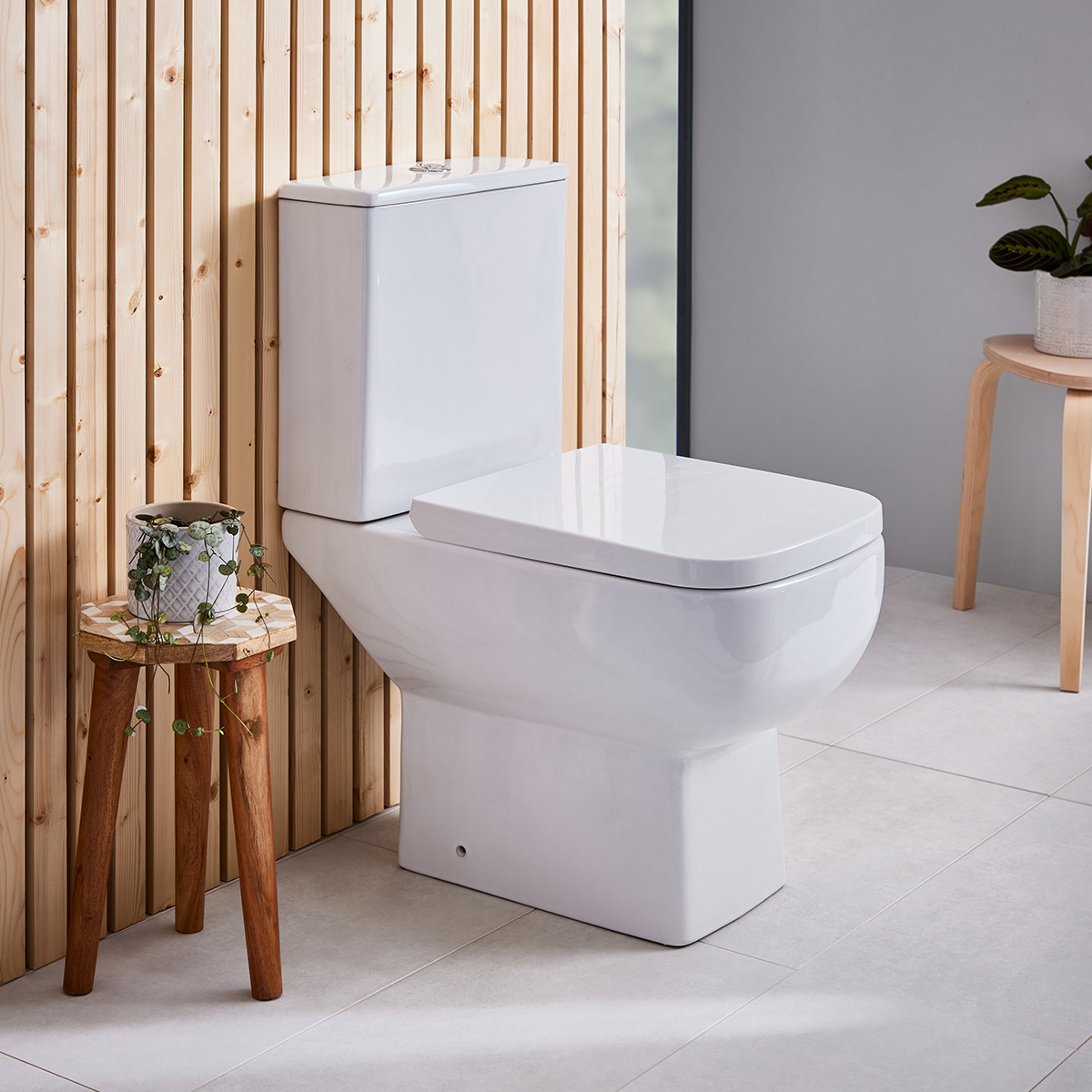
A blocked toilet can occur in any home at any time. The blockage should be dealt with sooner rather than later to avoid further complications. Before you consider calling a specialist firm or a plumber, attempting a few simple remedies to unclog the toilet could be worthwhile.
Showers to You takes pride in helping you master the art of DIY repairs, particularly when it comes to fixing your toilet. This collection of tutorials is easy to follow, enabling you to handle your toilet blockage confidently and efficiently.
Before we dive into how to unblock a toilet, there are a few essential details to understand...
How does a toilet work?
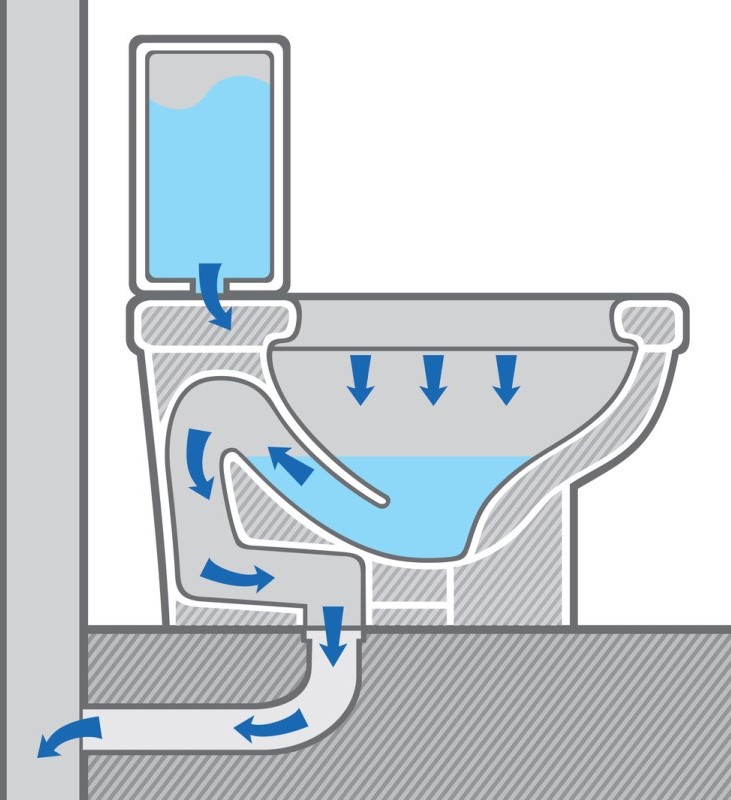
When learning how to unblock a toilet, it is crucial to have a basic understanding of how a toilet operates. Generally speaking, a toilet is made up of the following:
- Toilet Bowl/ Pan
- Waste Outlet
- Flushing Mechanism
- Cistern
- Water Supply
When you flush the toilet, gravity drives the water into the bowl, eliminating waste. Every toilet features a waste outlet, either horizontal or vertical, linked to a siphon. This siphon acts as a barrier, preventing unpleasant smells from infiltrating your bathroom and ensuring a clean and odour-free environment.
Why do toilets get blocked?
Most of us will experience some form of toilet blockage. There can be a singular or multiple reasons it may clog. Non-flushable products can cause a gradual blockage, including:
- Flushable and non-flushable wet wipes (even flushable wet wipes can clog your pipework)
- Cotton pads or buds
- General household waste
- Sanitary towels
- Nappies
- Limescale build-up
- Excess toilet paper
- Children's toys (this happens more than you think!)
If you are aware of the cause of the blockage, it will make it easier to find the solution and unclog the toilet.
Can you prevent toilets from getting blocked?
Most toilet blockages can be prevented by ensuring the above reasons do not occur. Items such as cotton buds and sanitary towels, which cannot dissolve, should be appropriately disposed of in a waste bin. Cleaning the toilet bowl prevents gradual limescale build-up. For optimum results, we advise the use of bleach weekly.
We always encourage everyone to improve their bathroom habits for environmental purposes. We invite you to explore our dedicated blog post on this topic for further insight and guidance.
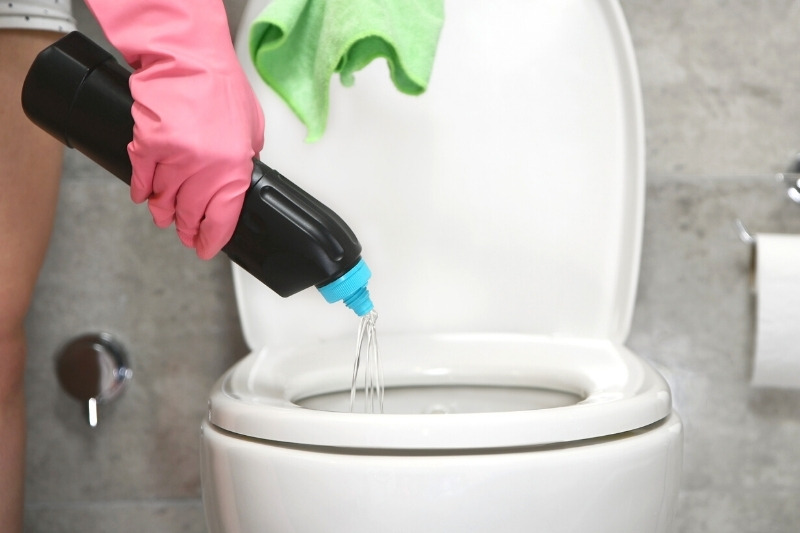
How do I identify the type of blockage in my toilet?
There are three common types of blockages in a toilet. Before a complete blockage can occur, there are signs to indicate that a clogged toilet is about to happen. The three main signs include:
Slow Water Drainage - After flushing the toilet, the water drains from the bowl slower than usual. This clearly indicates that a blockage is slowly forming in your pipes.
Rising Water - After flushing, the water level in the bowl continues to increase and does not fall. This means a complete blockage has occurred, and the water cannot pass through.
Empty Bowl - After flushing the water away, the bowl remains empty. This could indicate that the waste pipes are experiencing an issue with air circulation.
The longer the blockage is left untreated, the greater the problem is to fix and repair. We always advise taking immediate action once you first notice any of these signs.
If the water is draining slower than usual, try flushing it again. The increased pressure might be sufficient to dislodge the obstruction. However, refrain from this step if the water level approaches the bowl's brim.
Please be advised: If your toilet is connected to a cesspit or a septic tank rather than a sewer, the blockage could indicate the tank is full. You will need to contact a professional to empty it.
Can a toilet unblock itself?
While it may seem like the blockage has spontaneously resolved itself, allowing for water to drain, this could merely be a partial clearance of the obstruction. This scenario might lead you to believe the issue is fully addressed while the remaining blockage accumulates. Such a build-up can potentially trigger more severe problems in the future.
Why not read our blog post on How to Install a Toilet for more information about this sanitaryware?
How do I unblock my toilet?
We have several suggestions to unclog your toilet. Regardless of what toilet you have, such as a Wall-Hung Pan or a Close Coupled style, these methods apply to most designs:
Unblock a toilet with hot water.
If the toilet is partially clogged, it is possible to clear it using hot water (not boiling). This occurs when the hot water pressure helps to push the blockage down the pipe and potentially dissolves any fat or grease build-up. Adding a small amount of household washing-up liquid could help as well.
- Step One - Turn off the water supply to prevent the cistern from refilling.
- Step Two - Remove as much resting water as possible from the bowl using rubber gloves. Use a plastic container or an old sponge to aid you. Dispose of the wastewater into an external drain.
- Step Three - Pour a small amount of the washing-up liquid onto the bowl to lubricate the waste outlet. Leave the liquid to rest for approximately 10 minutes.
- Step Four - Pour two or three litres of hot water into the bowl. Do not boil the water. Take care not to accidentally scald your skin.
Within a few minutes, the water level could fall. If not, and there is enough space inside the bowl, repeat.
Unblock a toilet with a plunger.
Plungers can be used to unblock all waste pipes. They are a common item found in a plumber's tool bag.
- Step One - Cover the bottom of the bowl outlet with the rubber end of the plunger. If the plunger is too small, use some rags to plug the holes to make the gap airtight.
- Step Two - Gently push down and slowly release the plunger repeatedly. Gradually increase the force you push and pull until you see the water rising into the bowl. If necessary, refill the toilet bowl using tap water.
Unblock a toilet with a plumbing snake/ toilet auger.
A plumbing snake/ toilet auger is a long, handheld, flexible tool that can be pushed as far as the blockage reaches. The device can destroy the blockage or puncture a hole depending on the blockage clogging the toilet. This causes water to pass directly through the blockage and allow for extraction.
- Step One - Feed the snake into the toilet bowl (tip first) until you can feel the blockage in the pipe.
- Step Two - Using the handle, rotate the snake whilst firmly pushing downwards. This causes the blockage to potentially break down into smaller pieces.
- Step Three - If the tip of the snake has pierced the blockage, you may pull the snake from the bowl and free the blockage.
- Step Four - Flush the toilet to ensure the system works normally. If the blockage is caused by a solid object, such as a children's toy, you may have to remove the toilet bowl to get it.
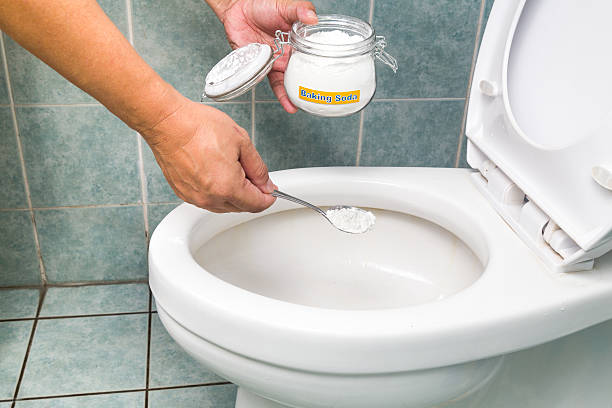
Unblock a toilet using baking soda.
Baking soda is a favourite cleaning tool around the house, from Cleaning a Showerhead to Unblocking a Shower Drain. Baking soda (or sodium bicarbonate) can be mixed with white vinegar and water to create a chemical reaction. Please do not use this method with septic tanks or cesspits; it could destroy the enzymes that help it work.
- Step One - Slowly heat two or three litres of water in a saucepan.
- Step Two - While heating water, pour half a cupful of baking soda directly into the toilet bowl.
- Step Three - Before the water in the saucepan boils, add half a cupful of white vinegar.
- Step Four - Pour the vinegar and water into the bowl and close the lid. A chemical reaction creates foam once the mixture fuses with the baking soda. Wait for approximately half an hour before flushing the toilet.
Unblocking a toilet using water pressure.
This method is highly effective when a plumbing snake cannot reach the blockage. If the toilet isn't completely blocked, water pressure is still an ideal unblocker method to provide good maintenance. As with the baking soda method, please do not use this on systems connected to septic tanks or cesspits.
- Step One - Using a pressure washer, ensure a pipe-cleaning kit is attached. This consists of a special nozzle and a long hose.
- Step Two - Insert the pressure hose (nozzle first) into the bowl until you reach the blockage.
- Step Three - Turn the pressure washer on and allow the hose to be pushed deep into the pipe from the water jet.
- Step Four - The jet will eventually break up and clear the blockage from the waste pipe.
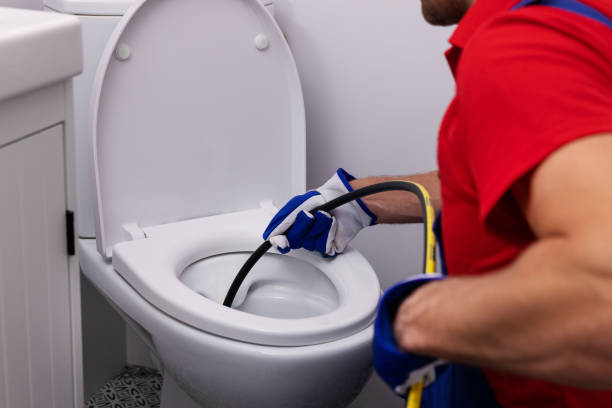
Why should I shop at Showers to You?
At Showers to You, we assure you that your perfect toilet, designed to complement your prosperous bathroom, is within our range. Our premium collection of toilets and other sanitaryware is sourced from leading manufacturers, ensuring a fit for everyone's taste, budget and requirements.
Should you require assistance selecting the most suitable toilet for your bathroom, our team of experts at Showers to You are readily available to guide you. Reach out to us through our online form, send an email to info@showerstoyou.co.uk or dial 01472 242159.
